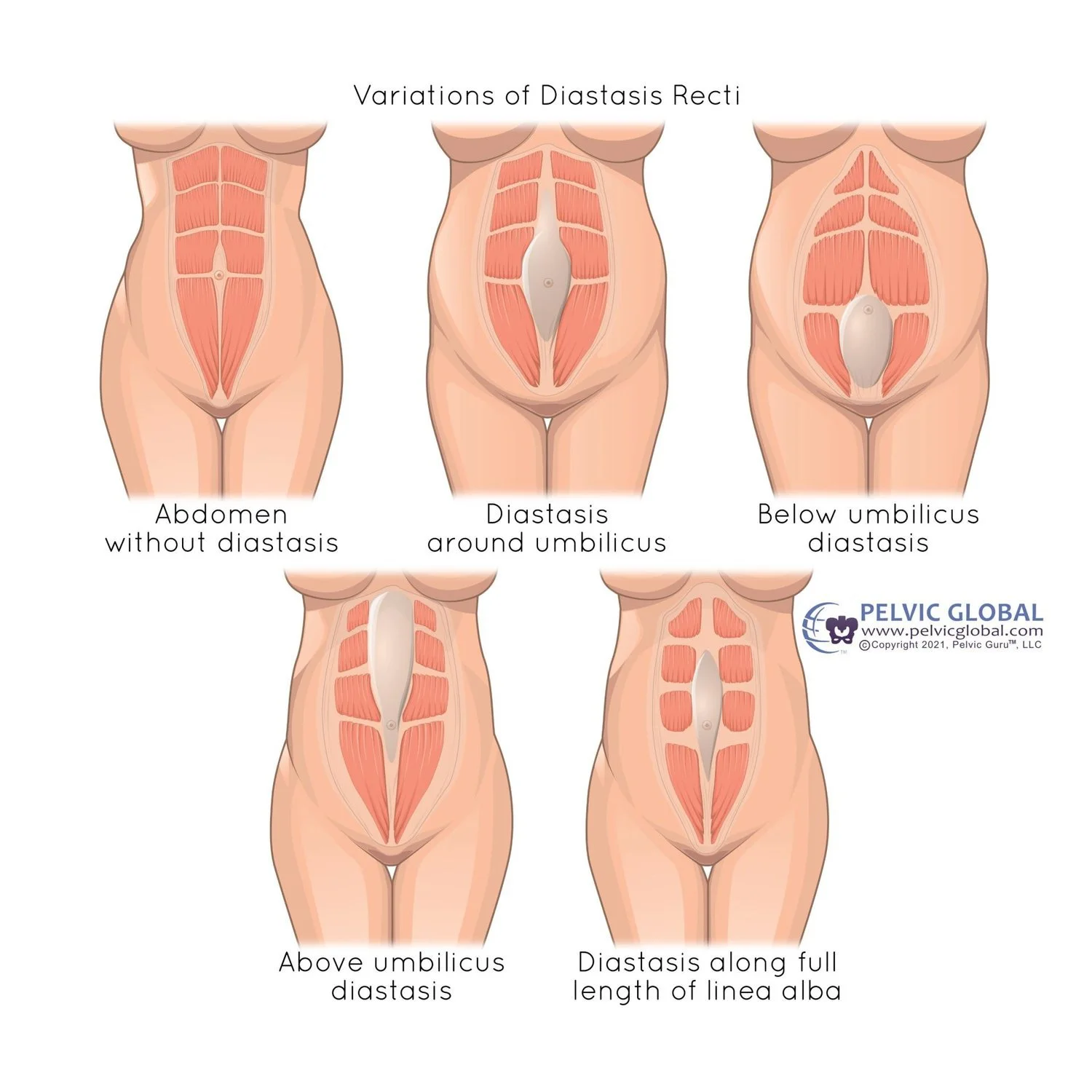What is diastasis?
Diastasis or diastasis rectus abdominus (DRA) is when the linea alba, the tissue that connects the recti muscles, widens and thins. It is a normal physiological adaptation to allow the belly to expand and the baby to grow and occurs in all pregnancies. Research tells us that for most postpartum women the DRA will recover. However, in up to 30 percent of women it will persist longer than six months. Although the focus of DRAM is in the postpartum population it can occur in people who bodybuild.
What about the “gap”?
When we look at what happens during pregnancy it is the entire core that changes to accommodate the growing baby. This includes all four abdominal muscle layers, the pelvic floor and diaphragm, plus the linea alba. The focus on the “gap” is likely because it is the most visible area that becomes stretched, plus we can measure the inter-recti distance and hence give it a value. Following delivery, some women may report dissatisfaction with how their abdomen looks and feels and complain of a “Mummy Tummy”. Whilst some presentations may be due to a relaxed linea alba, some may be due to the relaxation of the entire abdominal wall, plus skin stretch and adipose tissue, or even a combination of all of these factors. Only by considering and assessing all of these factors do we then begin to shift the focus from “a single band of tissue” and finger width measurement, to a more holistic approach.
How to rehabilitate?
Conservative management of diastasis centers around strengthening the core complex and is individual to each person and what they are capable of with control, core connection and considerations of their pelvic floor and breathing. This individualized approach allows exercises to be progressed, load and strength training to be added and functional goals to be met. This also facilitates a shift away from the prescriptive list of “safe and unsafe exercises”, and instead the exercise selection is based on the individual’s current strength and core status. Initial rehabilitation will focus on core connection style exercises and then progress to more global strengthening exercises for large superficial muscles and functional activities. Postpartum rehabilitation is also a continuum and a realistic time-frame can be anywhere between six and 18 months.
Whilst research is still developing in this area and we don’t have all the answers, a large emphasis on education is helping to reduce fear and improve treatment outcomes.
Women’s and Pelvic Health Physiotherapists are a valuable addition to the multidisciplinary team in managing diastasis. Come and meet our friendly and skilled therapists.
This information is general in nature and does not constitute medical advice. It is always recommended that you seek input from your medical professional when any symptoms are present.
Written by Kym Toller, Evolve, Women’s Health Physiotherapy.

